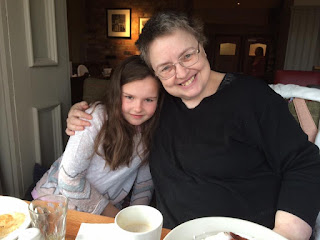B is for ... Beta Males, Beta Couples and Barbara Cartland
B is for Beta Male
The beta male in any romance is a little less … shall we say thrusting … than the alpha male. He is the boy next door, or the best friend you’ve known all your life but hadn’t noticed till now; the single dad you see at the school, or the nice guy who works as a vet. He’s gentler and more apologetic than the alpha male. Think of any Hugh Grant character, before he played Daniel Cleaver, and there you have your beta male. Another example of the beta male is Edward Ferrars in Sense & Sensibility (coincidentally played by Hugh Grant in the Emma Thomson version).
He’s the guy who loves unrequitedly and it’s unlikely he’d whisk the heroine off to a desert island. He’s more likely to take her for tea at The Ritz or ice skating in the park.
That does not mean that the beta male is weak. He is honest, noble and sticks to his principles, even if it causes him pain. But like the alpha he will protect the woman he loves and all his family. Occasionally he will start off as a beta, but end up with alpha traits, when he realises he has to fight for the woman he loves. So expect the last minute dash to the airport, or the declaration in front of everyone that he loves the heroine and has done forever.
B is also for Beta Couple
The beta couple in a romance is a trope very often used in Regency Romances, but can also happen in modern romances. They’re the secondary couple and very often the alpha couple will be brought together by the Beta Couple or the Alpha Couple (that is the main hero and heroine) could be the ones trying to bring the betas together.
They’re generally either related to one of the alpha couple or are their best friends. In When Harry Met Sally, Harry and Sally tried to set up each other on a date with their respective best friends, only for the best friends to fall in love and get married (and they then became ‘shippers’ for Harry and Sally, and are thrilled when Harry and Sally finally get together).
Another example of a Beta Couple is Jane Bennett and Mr Bingley in Pride & Prejudice. Their relationship is a major plot point for Lizzie and Darcy.
B is for BarbaraCartland
It has become fashionable to mock Barbara Cartland, and to be fair she made it very easy to do that, with her eccentrically thick make up and her pink gowns. But it’s easy to forget that her novels were very popular at one time, and that she had an incredible work ethic. She wrote over 700 novels, which is no mean feat. 23 of those novels were written in one year (1983), earning her a place in the Guinness Book of Records.
Cartland’s novels were characterised by her virginal heroines, which made her particularly popular in Arab states, so it might be a surprise to learn that her earlier novels were considered quite racy. (I still have to track those down…) For the most part, her heroes were decidedly alpha, and her heroines of the breathless variety, though occasionally they showed some spirit and backbone.
But if you like clean romance, Cartland’s novels are a delight to read, and a real ‘guilty pleasure’. At least for me. They are pure fantasies and everyone needs a bit of fantasy in their lives sometimes.
Many of her books are now on Kindle, including the Pink Collection, which are books that were not published in her lifetime, and The Eternal Collection, which were. The Introduction to the Eternal Collection, and The Introduction to the Pink Collection at the time of writing, are just 77p each.

Thanks for this post. I am put off by alpha males and cannot bear either to write or read them. So this gives me hope that there may be a place for my kind of hero in published fiction.
ReplyDeleteThanks Selina! Oh there are lots of different types of heroes and I'll be visiting them all over the course of this blog. :-)
ReplyDelete